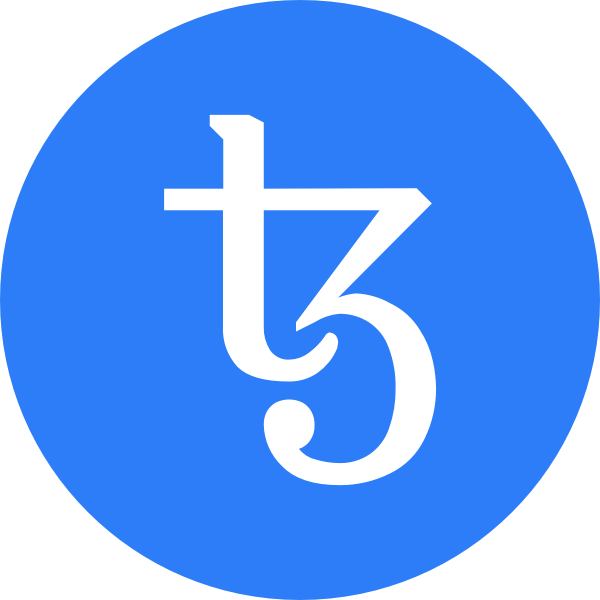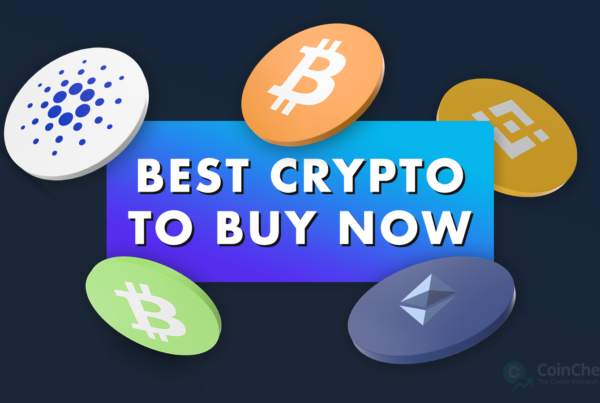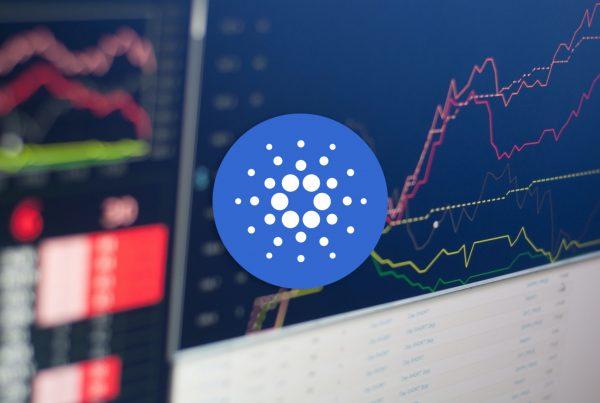
Again, the total cryptocurrency market capitalization fell by more than $100 billion in a week and reached a low of $1.16 trillion at the start of Week 24. More than half of last week’s loses were incurred over the weekend – this is between June 11 and June 12. Interestingly but not surprisingly Ethereum and altcoins were hit harder than Bitcoin, resulting in an increase in Bitcoin’s market share. BTC dominance rose from 44.8% on Friday to as high as 45.8% on Sunday, June 12. If you are wondering how to make the most out of this bear market, then read on and find out which 3 coins we recommend keeping an eye on this week.

3. Tezos (XTZ)
Tezos is a decentralized smart contract and application network that utilizes a modified version of Delegated Proof of Stake consensus. The blockchain launched in September 2018, following an initial coin offering (ICO) that raised $232 million in 2017. XTZ token is the native cryptocurrency of the Tezos platform. Tezos blockchain also features an on-chain governance system allowing holders to take part in the decision-making process. Developers can suggest changes or upgrades to the Tezos protocol, and if their suggestion gets approval from the community, they are rewarded with XTZ tokens after it is successfully implemented. What makes Tezos blockchain stand out among other similar blockchains is its efficient network upgrade process as the protocol allows major upgrades to be implemented without the requirement of a hard fork. This system allows Tezos to adopt new technologies quickly. Tezos also boasts with a burgeoning NFT ecosystem.
XTZ hit a monthly high following the announcement of USDT’s launch on Tezos
At the end of last week, Tether Operations Limited announced that its flagship USDT stablecoin is expending to Tezos blockchain. Tezos will thereby become the 13th blockchain, on which the USDT stablecoin is natively available. The launch of a Tezos-based USDT token will provide Tezos community access to the most liquid and trusted stablecoin. On the other hand, the USDT’s expansion to Tezos could help Tether further grow its already big stablecoin market share or at least maintain its pole position among stablecoin projects. At the moment, USDT is the biggest stablecoin on the market – its $83 billion market capitalization leaves the second-placed USDC around $30 billion behind. The investors responded positively to the news as XTZ climbed to reach a monthly high of $2.34 following the announcement. In addition, we have also recently reported about the launch of a new Ethereum/Tezos bridge called Plenty. The bridge, which was developed and launched by a Web3 development studio Teszure facilitates faster and more efficient token swaps between the two networks. Despite the ongoing technical improvements, the Tezos platform is not neglecting other fronts of development. Its NFT sector is still booming, with new NFTs being dropped weekly. Just recently, famous clothing brand Gap announced new NFTs on its marketplace built on Tezos. The Epic and One-of-a-kind class NFTs will be auctioned on June 14 and June 15.

2. Solana (SOL)
Solana is a smart contract enabled blockchain platform developed with a focus on scalability. Due to its high throughput of 65,000 transactions per second and absurdly low transaction fees (an average transaction on the blockchain costs just $0.00025), Solana is considered one of the strongest Ethereum competitors. Such a high blockchain efficiency is made possible by utilizing an innovative proof-of-stake consensus mechanism combined with proof-of-history (PoH) timestamping mechanism. Because of the reasons, Solana is very popular among various non-fungible token (NFT) projects and decentralized finance applications of all kinds. In addition, the project is also backed by major investors such as Alameda Research, Polychain and Andreessen Horowitz that provide Solana Labs with more than sufficient funds for further development of the Solana ecosystem.
Will a series of integrations and a $100 million ecosystem fund be enough to finally reverse SOL’s price trend?
After months of negative price movement (SOL is down by 80% in past 6 months), Solana could be in for a trend reversal due to a series of investments and ecosystem developments. The popular privacy-preserving browser Brave recently announced that its strategic partnership with Solana in an attempt to make Web3 accessible to the masses. With Brave’s 1.39 desktop release its users will be able to trade and hold both Solana (SOL) and fungible Solana tokens (SPL) in Brave Wallet as well as buy SOL directly with fiat via Ramp. In the future, BAT holders will also be able to buy and sell NFTs on Magic Eden, the largest community-first NFT-based web3 ecosystem, directly through Brave Wallet or other Solana wallets like Phantom. With this implementation, Solana’s NFT marketplace Magic Eden is aiming to completely close the gap with OpenSea, currently the leading NFT marketplace. At the end of May, Magic Eden already conducted six-times more transactions and had more weekly active users as OpenSea. Nevertheless, Magic Eden still fell behind OpenSea by 23% in terms of weekly transaction volume. Furthermore, the rise in the popularity of Magic Eden continued with almost no loss of momentum despite the fact that OpenSea added support for Solana NFTs earlier this year. Leaving Brave integration and the increasing adoption of Solana’s NFT marketplace aside, Solana investors have another good reason to gaze into the future with optimism as a $100 million ecosystem fund got launched last week. The fund, which was created by Solana Ventures and Solana Foundation, will invest in South Korean Web 3 projects building GameFi, DeFi and NFT applications on Solana.

1. ChainLink (LINK)
ChainLink is a decentralized oracle network that provides data and price oracles, which act as a reliable feed of off-chain information for some smart contracts. The project launched in 2017, when it also raised $32 million of funding through an ICO. ChainLink’s cryptocurrency price and real-world data oracles have seen numerous implementations and their popularity is still increasing. Their oracle service is one of the most reliable and trustworthy services available and the connection with smart contracts is end-to-end secured, leaving very little space for the manipulation of the execution of smart contracts. Another ChainLink feature is Verifiable Random Function (VRF), which proved to be very useful in blockchain gambling as well as providing a source of verifiable randomness in blockchain gaming and when minting NFTs.
ChainLink team laid out the LINK staking roadmap
The initial version of LINK staking is slated to hit the mainnet in the second half of 2022, ChainLink team revealed in an official post published on Tuesday, June 7. With the implementation of staking the developers want to enable community participation in the ChainLink network while maintaining the cryptoeconomic security of ChainLink’s services at the same time. In brief, staking will introduce a powerful incentive and penalty mechanism for ChainLink nodes, forcing them to generate accurate oracle reports and deliver them to specific recipients on time if they don’t want to see their LINK stakes slashed. Good nodes will be able to earn APY of up to 5% on their long-term staked LINK. LINK surged by more than 20% in the aftermath of the announcement, but the coin already lost all the generated gains in this weekend’s sell-off. Nevertheless, the story with LINK staking is far from over and with a price of $6.80 per token, LINK is currently trading at a heavily discounted price. Furthermore, on the same day as ChainLink laid out its plans for LINK staking, a leading crypto infrastructure provider Infura announced it is joining the ChainLink network as a node operator. Interest from big firms like Infura indicates that ChainLink is not to be written off just yet as its services still have a massive growth potential.



